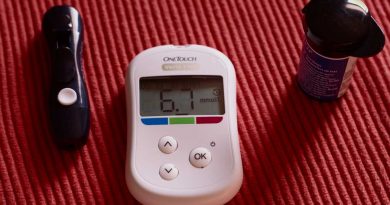The benefits of a standardised digital health agenda in Malaysia

The Minister of Health Malaysia, Datuk Seri Dr Dzulkefly Ahmad, in one of his remarks said, the Ministry of Health (MoH) is committed to ensure that the electronic medical record (EMR) system can be realised within three to five years in all hospitals and clinics nationwide.
Noting that the EMR system is one of the basic and fundamental digital infrastructure for building a digital health ecosystem, he said the system would allow for the entire clinics and hospitals to be integrated.
It will then enable the health facilities to achieve a seamless level of patient information services and systems, with no obstacles or barriers to accessing patient information. Fortunately with EMR, MoH will be able to enhance the effectiveness of health services in terms of patient care and management.
Part of the MOH Malaysia’s ICT Strategic Plan is to achieve a standardised digital health agenda and the vision is for an integrated healthcare system to provide comprehensive health services to the people. An integrated healthcare requires information that flows from different systems and various sources but interoperability between information systems still remains a challenge. Therefore, promoting the use of health informatics standards that is recognised internationally is important in pursuing this vision.
“In Malaysia, we are continuously developing and managing standards with international benchmarking. Among the standards implemented include the Malaysian Health Reference Data Model (MyHRDM), Malaysian Health Data Dictionary (MyHDD), ICD, ISO TC 215, LOINC and SNOMED CT,” said Datuk Dr Noor Hisham Abdullah, Director General of Health Malaysia.
Benefits of SNOMED CT adoption – locally and regionally
As one of the most comprehensive medical terminology standards, SNOMED CT is an international standard and validated clinically through a rigorous process. One of the main advantages of SNOMED CT is its comprehensive clinical concepts and relationships, which enable a wider range of analyses of healthcare data that could not be done previously.
“We have troves of health data waiting to be analysed and with the advancement of technology and also SNOMED CT, all of these data can be used and analysed by clinicians and healthcare policymakers to further improve the services and patient outcomes,” Dr Noor Hisham explained.
In the Asia Pacific region, the SNOMED CT community is also growing with members in countries such as Australia, Brunei, Hong Kong, India, Kazakhstan, New Zealand and Singapore. With a growing community, member countries can share their views and experience, particularly in the implementation of SNOMED-CT in their own countries – the exchange of ideas and collaboration will further improve the quality of healthcare services of the member countries. With increasing numbers of participating countries, the journey towards interoperability of patient data and improvement of service delivery for treatment across borders can be achieved faster.
“SNOMED CT is more than just about comprehensive clinical terminology standards. It is also about the community behind it. Within the SNOMED CT family, we have an abundance of shared knowledge and experience between experts from the SNOMED International committee and also member countries,” said Dr Noor Hisham.
SNOMED implementation in Malaysia and its impact
According to Dr Noor Hisham, MOH Malaysia is interested in analysing health data and utilising it for evidence-based decision making and planning at the highest level. SNOMED CT allows for improved data analytics at the Ministry through the development of MyHarmony and Malaysian Health Data Warehouse (MyHDW). MyHarmony is a feature of MyHDW that has the ability to deal with unstructured data.
Through using MyHarmony with SNOMED CT, more information from free-text utilising the SNOMED CT structure can be generated, reducing the effort needed to collect data in a structured manner such as in registry and indicator reports.
Another benefit of using MyHarmony with SNOMED CT is the ability to generate new information by retrospectively running new queries on old discharge summary records, which reduces the effort and time to collect data in a prospective manner when new questions arise, such as for indicator reports that often change on a yearly basis.
Information can be delivered in a timelier fashion through using MyHarmony with SNOMED CT and this enables clinicians and health managers to plan and take action without waiting for a yearly report which can take one to three years.
Future plans for SNOMED-CT in Malaysia
“Firstly, we want to expand the usage scope of SNOMED CT with MyHarmony. Currently, we are in the middle of developing the dental procedure reference dataset. We are looking into extracting the data on dental procedures by analysing the procedure data written in free text by dental clinicians.
We are also planning to expand SNOMED CT’s usage for drug and Traditional Chinese Medicine (TCM). We look forward to work with the vendor community to increase the awareness of SNOMED CT, and hope that more vendors will utilise SNOMED CT in their products and benefit from its functionalities,” shared Dr Noor Hisham.
The SNOMED CT Expo 2019 will be held in Kuala Lumpur, Malaysia from Oct 31 to Nov 1. Malaysia’s Minister of Health, The Honorable YB Datuk Seri Dr Dzulkefly Ahmad will deliver the conference opening plenary. More details about registration can be found here.
Source: Read Full Article



